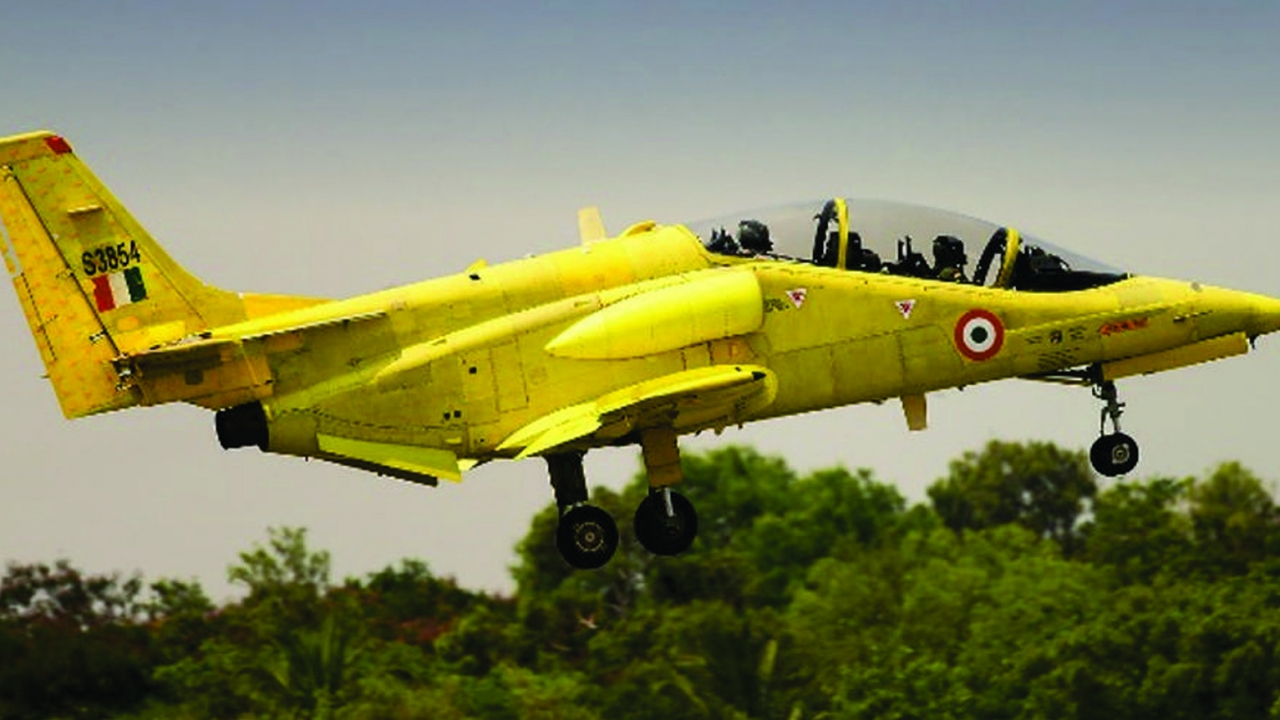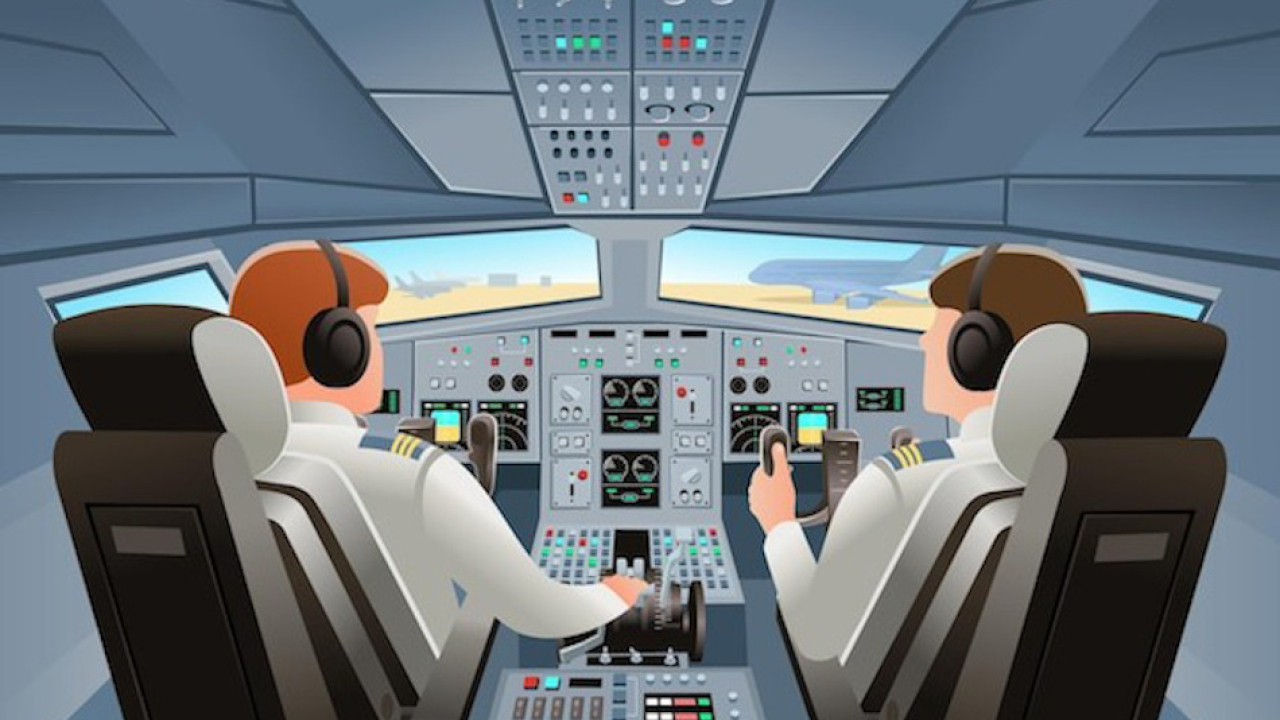Why India's new jet trainer is in a spin
India’s home-grown Intermediate Jet Trainer (IJT) is getting ready for induction with the successful demonstration of its capability to carry out six turn spins.

India's IJT on test flight - now successfully passed spin test.
India’s IJT Getting Ready for Induction
The subsonic IJT is designed and developed by the state-owned Hindustan Aeronautics Limited (HAL) for stage-II training of Indian Air Force (IAF) pilots. The IJT is also to replace the ageing Kiran trainer fleet of the IAF.
“The aircraft will require another two years of testing after which it will be ready for induction,” said R. Madhavan, Chief Managing Director of HAL.
The IJT had earlier completed demonstration of capabilities in terms of altitude and speed envelope, load factor, satisfactory stall characteristics and limited armament capability as required by the IAF.
“The only pending task was spin testing. During the course of spin testing, in 2016, the aircraft departed from controlled flight which brought the programme to a temporary halt. However, HAL decided to proceed further using its internal resources to complete the critical Spin testing,” Madhavan noted.
The capability to enter and recover from spin is a necessity for a trainer aircraft in order to familiarise the trainee pilot to recognise departure from controlled flight and the actions required to recover from such situations. Achieving satisfactory characteristics during spin and an assured recovery from spin form a part of very crucial flight tests due to its unpredictability.
The spin flight testing is inherently a high risk manoeuvre and therefore progresses incrementally turn by turn. Due to the complex interplay of aerodynamic and inertia forces, the motion of the aircraft in spin is unpredictable and flight testing is the only way to assess the acceptability or otherwise of its characteristics.
The spin flights are carried out in good weather conditions with a team of designers, flight test engineers and safety pilot monitoring the various parameters during the flight and therefore time consuming.
Several flight tests are required to be carried out before six-turn spin flights are undertaken as well as a number of flights are further required before full spin certification is achieved.
HAL had halted flight tests of the IJT or Hindustan Jet Trainer HJT-36 ‘Sitara’in 2016 after the aircraft encountered multiple failures while undergoing critical spin tests.
Subsequent to the temporary halting of flight tests in 2016, HAL’s in-house research, design and technical teams modified the aircraft, which has been produced in a limited series.
HAL undertook major modifications like shifting the vertical tail aft on the airframe and increasing the rudder area and flight testing resumed in April 2019.
“Despite being put on hold, work on the project was on. HAL continued its R&D efforts and undertook modification of IJT LSP4 aircraft based on extensive and comprehensive wind tunnel studies,” Madhavan said.
These modifications entailed the use of a new Anti-Spin Parachute system (ASPS) which is mandated for the safety of the aircraft and test crew during spin flight testing. The new ASPS was integrated into the aircraft in July 2020 and the successful streaming of the parachutes were demonstrated in September 2020.
Despite the delays due to COVID-19 pandemic, HAL could commence the stall and spin testing of the IJT in its new modified configuration in November 2020.
HAL also received two AL-55I turbojet engines delivered by Russia’s United Engine Corporation (UEC) in July 2021 for the trainer aircraft. Besides, considerable work has been carried out to arrange the licensed production of AL- 55I engines at HAL’s enterprises. With its modular design, the engine provides
high performance efficiency, manufacturability and low cost of operation.
The engine’s advanced digital control system ensures safe piloting and easy maintenance. In February last year, a HJT-36 trainer, powered by the AL-55I jet engine, took off successfully.
IJT incorporates the simplicity necessary for ease of conversion from Basic Piston Trainer and the sophistication required for quick conversion to the complexities of an Advanced Jet Trainer. However, there has been no indication from the IAF about apossible order for the IJT aircraft.
A HAL official said efforts are on to convince and persuade the IAF to purchase the aircraft. The inordinate delays in the IJT developmental programme has compelled the IAF to reconfigure its training regimen, which now sees rookie pilots get their basic and intermediate training on PC-7 Mk.II propeller trainers and advanced and lead-in training on HAL-built Hawk Mk.132 aircraft. The IAF has actively weaned training elements away from the ageing HJT-16 Kiran jets, though these platforms are used occasionally for training.
Capable of training pilots in air to air, air to land and waypoint navigation, the IJT or the HJT-36 boasts a composite body, a modern full glass cockpit, zero-zero ejection seats and modern avionics. It can carry a ton of armament in the form of podded guns, within visual range air to air missiles, rockets and anti-tank missiles.
This makes it an effective solution against a variety of targets such as unmanned aerial vehicles, and tanks, for which a supersonic fighter aircraft would be an overkill.
Two prototypes of IJT were built after the project kicked off in 1999. But despite its maiden flight in 2003, the project was plagued by delays. It suffered the first big setback when one of the prototypes went off the runway as thousands watched at the Yelahanka Air Base in Bengaluru during Aero India 2007. The second prototype suffered another mishap during a test sortie. This flight test was critical since its success would have helped the project progress to the Initial Operational Clearance stage.
The IAF has been struggling to fill the gaps of trainer aircraft for years. The IAF has 310 trainer aircraft — more than 100 less than the sanctioned number of 432, a parliamentary panel report revealed last February.
The establishment of the IJT or the HJT-36 training aircraft is in the final stage of flight certification testing, which must confirm the compliance of the HJT-36 aircraft with the requirements of the Indian Air Force.
Stay up to date
Subscribe to the free Times Aerospace newsletter and receive the latest content every week. We'll never share your email address.


